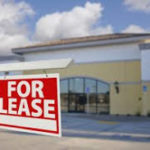Crosstown Commercial / February 1, 2021
Hope for the Commercial Real Estate Industry in the Twin Cities
The Twin Cities has faced its fair share of challenges in recent months. From the COVID-19 pandemic to the riots that stemmed from George Floyd’s death which resulted in damage to nearly 1,500 businesses, it’s been a tough ten months. Thankfully, there appear to be some early signs of hope as 2021 gets underway.
A recent article by the Midwest Real Estate News shared insights from two local real estate professionals from Colliers International. Andy Heieie, SVP for land and investment services, and Andrew Odney, VP of industrial brokerage, share insights that indicate optimism for the Twin Cities commercial real estate market.
Optimism for the Twin Cities CRE Industry
Read on for ten additional insights from the article.
- The Twin Cities development mindset is currently positive, and there is great development underway in Twin Cities suburbs.
- Though there will be improvements in 2021, it will continue to be a struggle. Downtown Minneapolis will begin to look better in early 2022 as offices start to reopen and commuters head back to the physical workplace.
- The large majority of industrial tenants are holding steady, with some stronger now than before the pandemic’s onset.
- There has been a rise in near-shore manufacturing driven by consumers who want their goods faster and closer to home.
- Consumers who never thought they would share personal information online have taken to the internet for everything from clothing purchases to same-day grocery delivery. This change in consumer behavior is believed to create a long-standing demand for industrial real estate.
- Though there isn’t more demand for multifamily than before the onset of the pandemic, the market is still quite active. The development has refocused efforts on St. Louis Park, Minnetonka, Hopkins, Maple Grove, and Eden Prairie, which are considered first- and second-tier markets. These markets are strong and located within proximity to the now under-construction light-rail transit line.
- For the time being, the suburbs will continue to be more attractive to businesses than downtown Minneapolis. But, as things start to reopen in the coming months, we can assume that downtown will regain its popularity as people want to get back to Target Field, U.S. Bank Stadium, and other downtown venues. There is a pent-up mentality amongst those working remotely and from home for the past ten months. These folks want to get out to sporting events and restaurants as soon as it is safe to be out and about again, amongst others.
- New apartment developments will begin to further differentiate from one another. Movie theaters, bowling alleys, high ceilings, and high-end appliances are differentiators, but safety remains a top concern for potential buyers.
- Industrial tenants want proximity to their customers. To that end, they want to make it easy for trucks to get goods to customers, so industrial parks that can drop trailers will be a plus.
- Growth will remain steady in the coming months but can accelerate depending on future months with the pandemic. There remains a COVID-driven demand for industrial real estate.



























